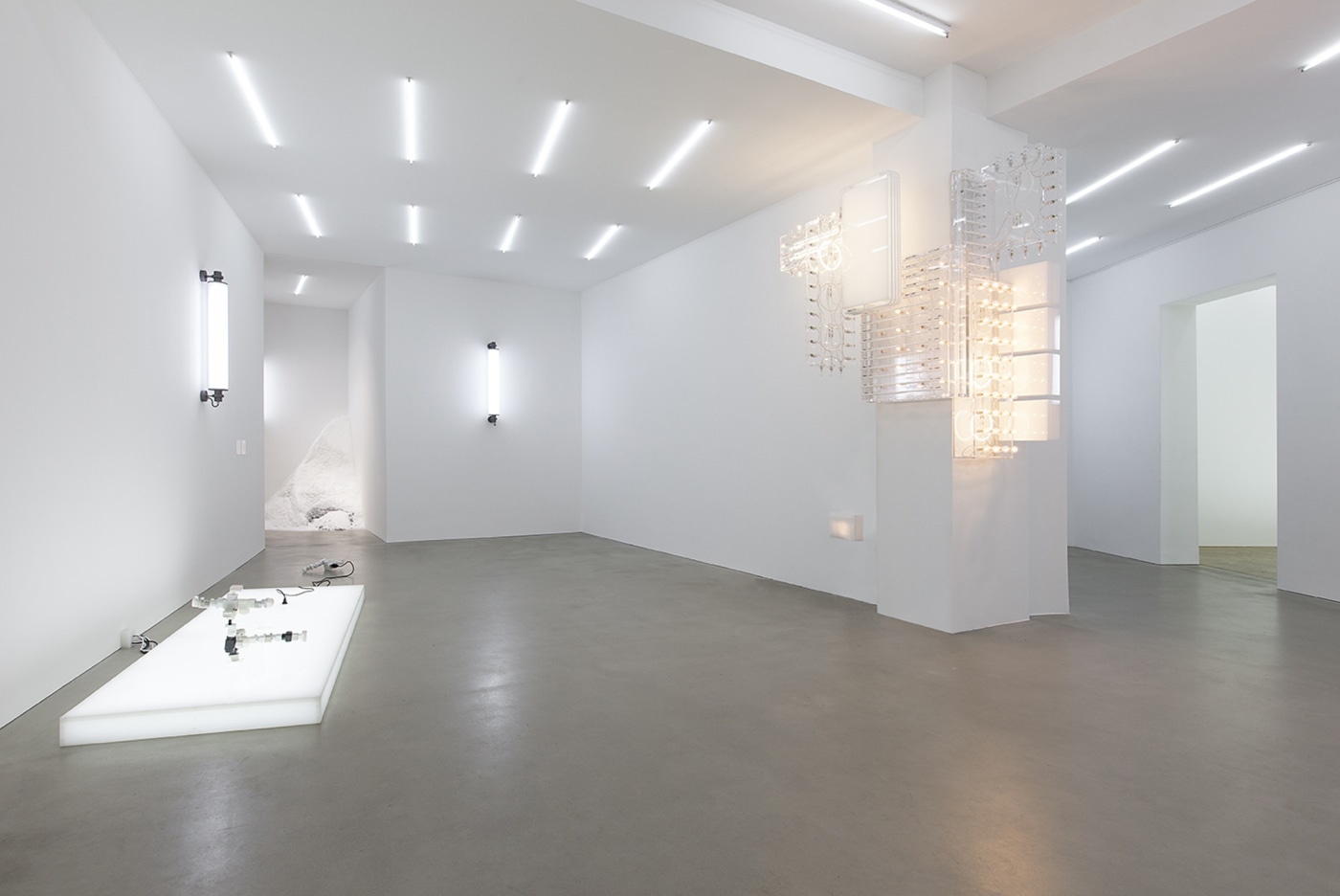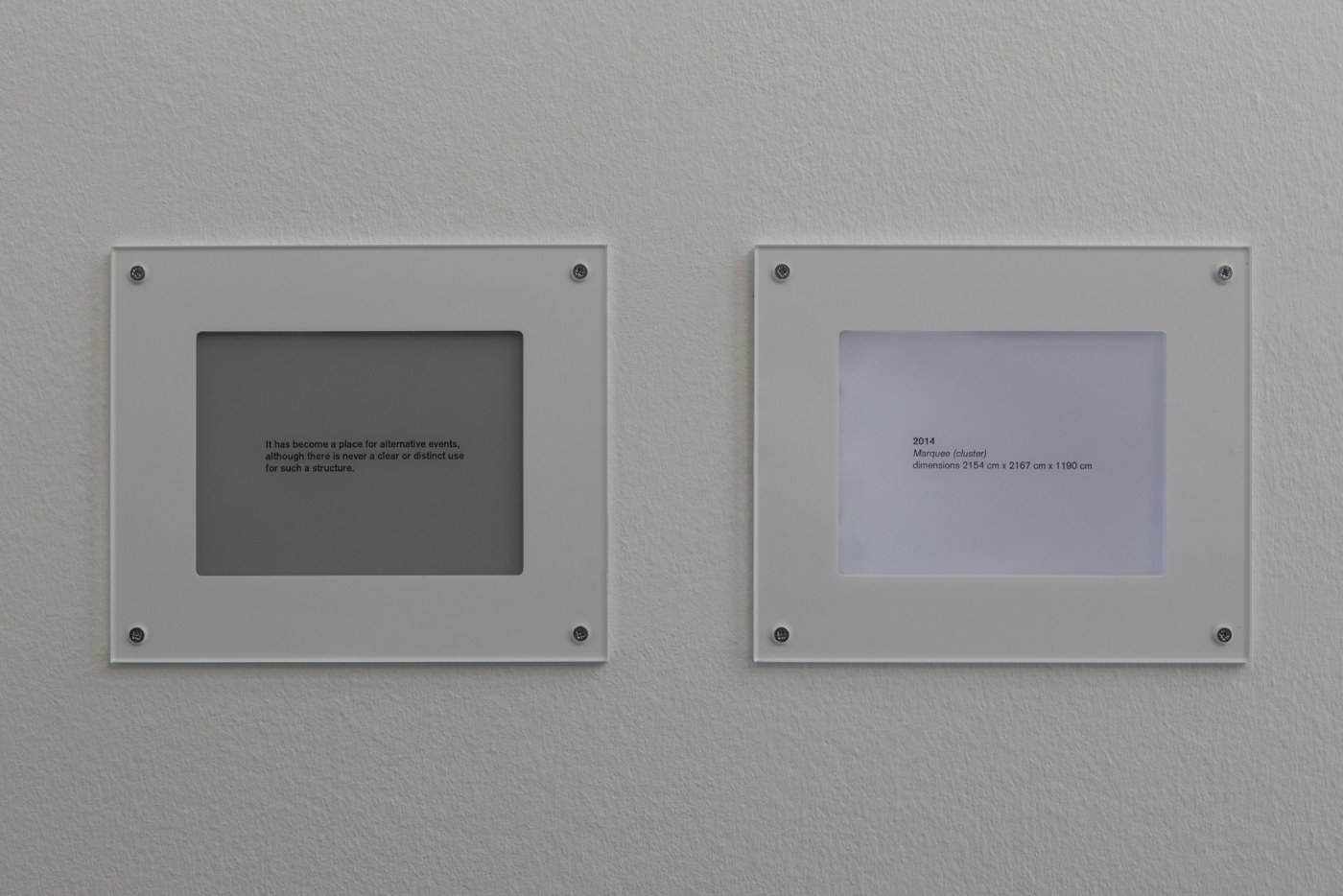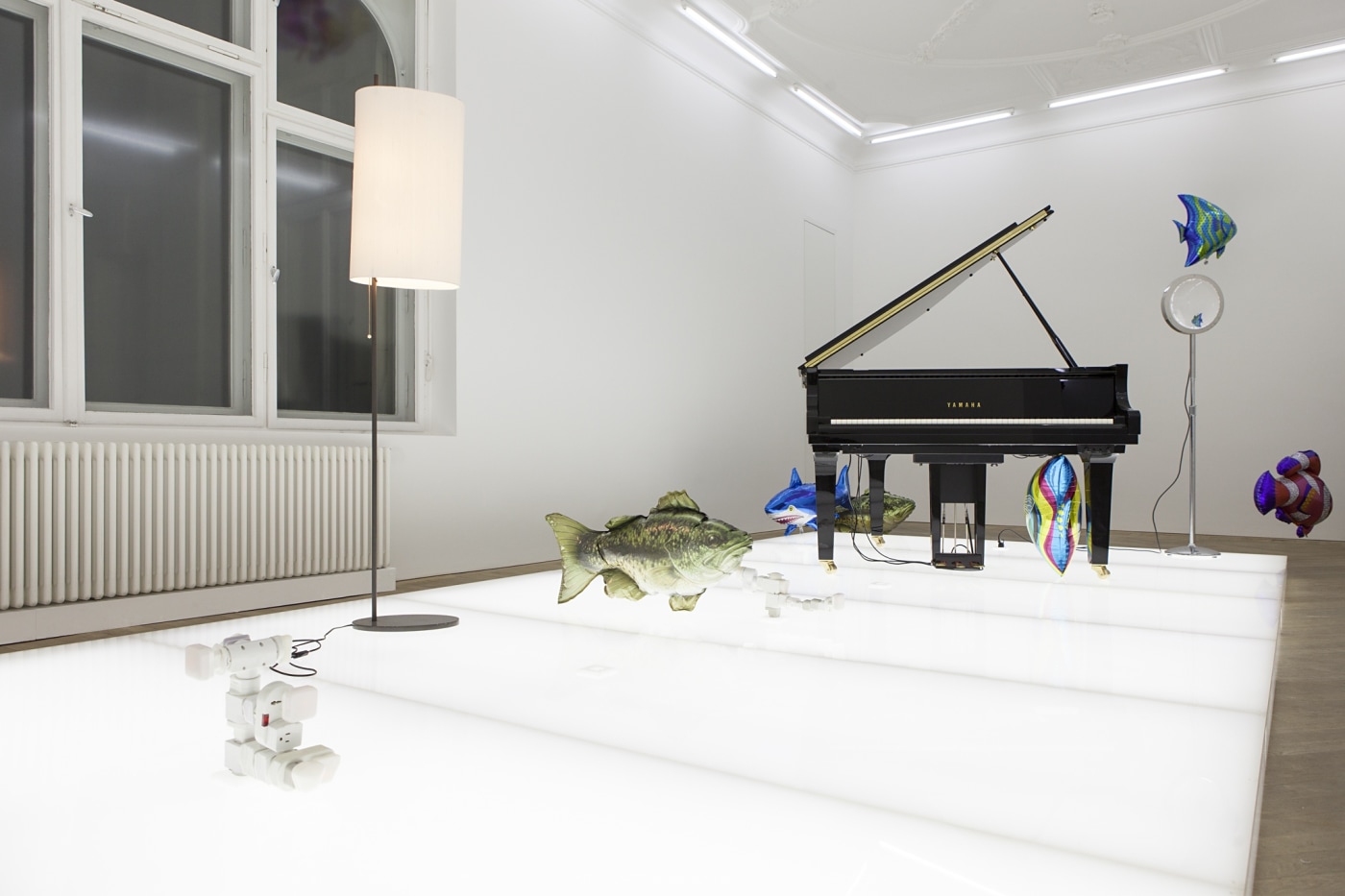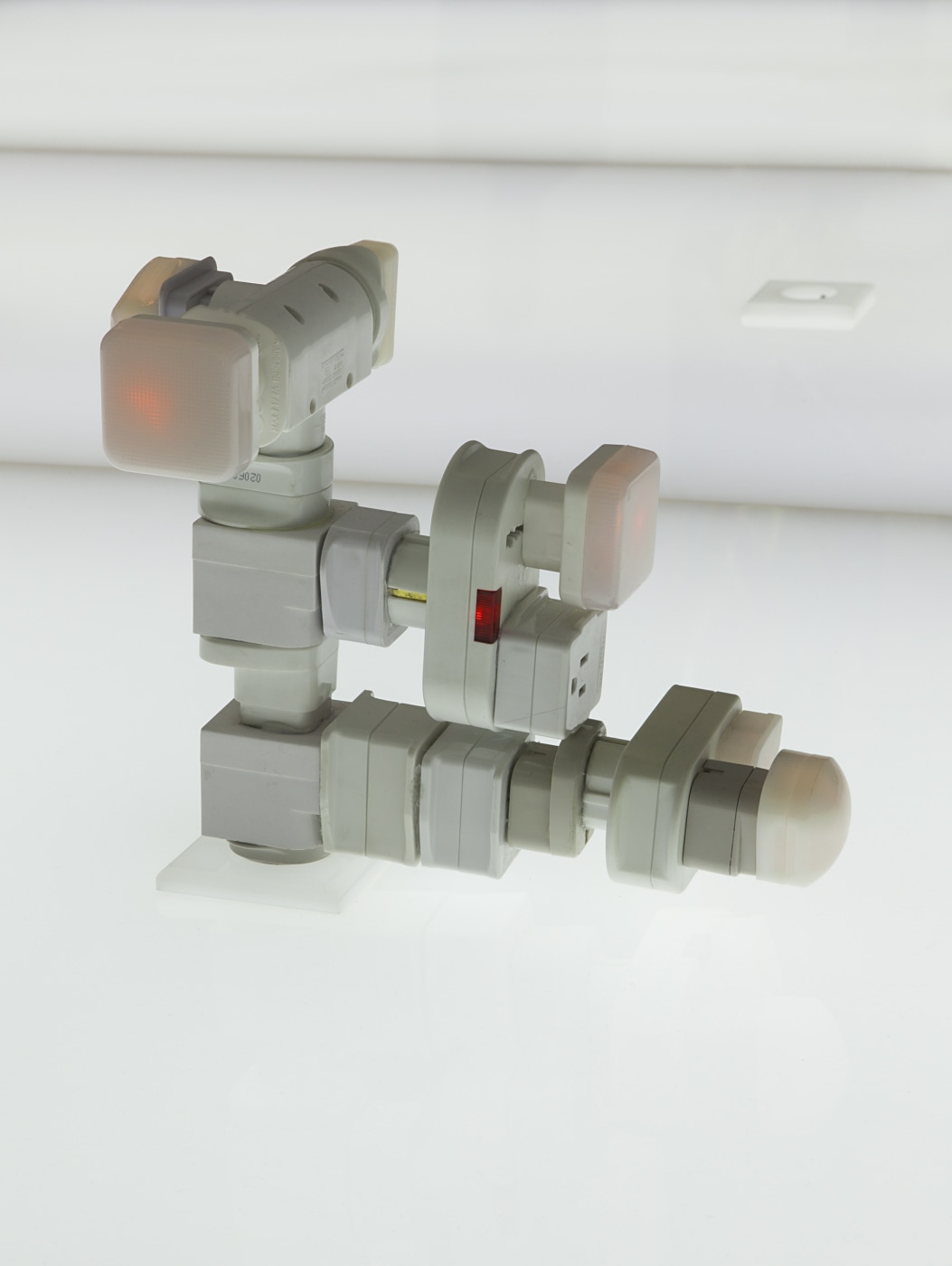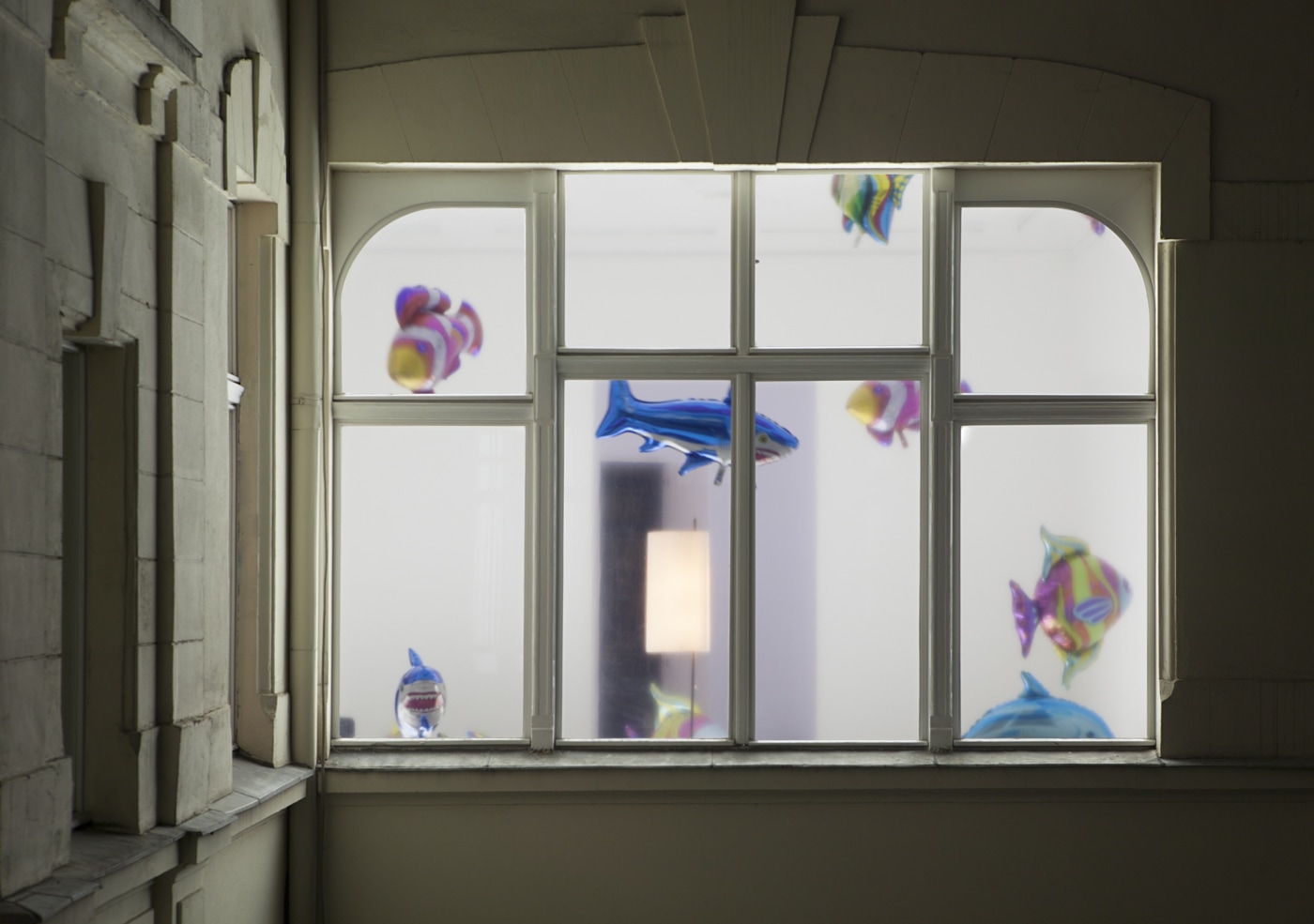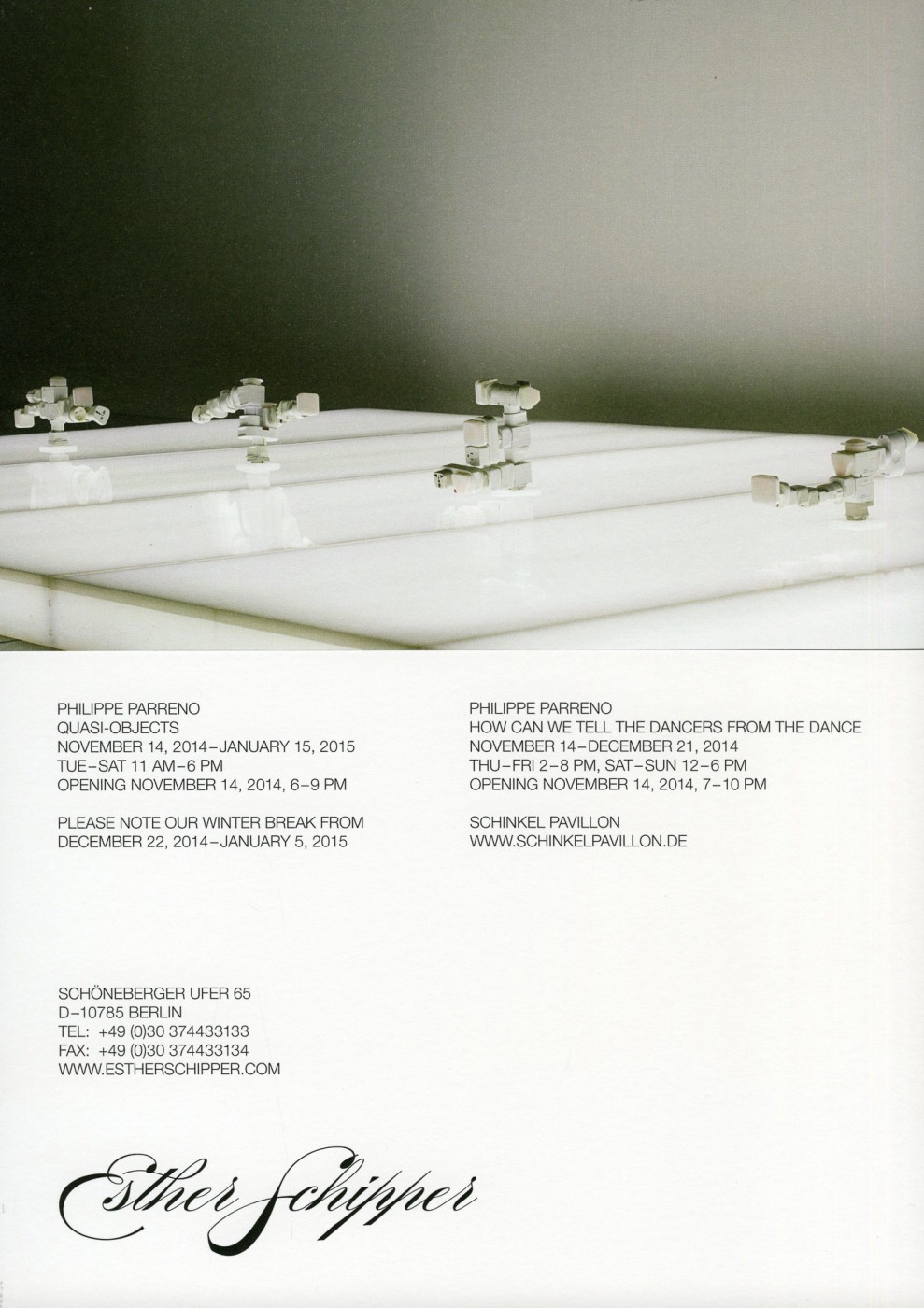Flickering Light, 2013 (left and back) LED light, 1 programmed chip The light in the vertical lamps is programmed using a DMX controller to flicker in a predetermined rhythm. At the artist’s 2013 solo exhibition at the Palais de Tokyo 56 of the lamps were programmed to flicker in correspondence to a timecode based on Igor Stravinsky’s Petrushka. Quasi Objects: My Room is a Fish Bowl, AC/DC Snakes, Happy Ending, Il Tempo del Postino, Opalescent acrylic glass podium, Disklavier Piano, 2014 (detail; back) Each element refers to an important early exhibition in which one of the quasi-objects was included. Together they can be understood as a network of quasi-objects and as a self-reflective genealogy of the artist’s exhibition practice since the mid 1990s. AC/DC Platform, 2013 (center) Opalescent acrylic glass podium, LED lights, 3 plugs, 2 AC/DC snakes Assembled from multiple adapters, plugs and nightlights, AC/CD snakes were first created in 1995 at the occasion of Parreno’s exhibition Snow Dancing at Le Consortium in Dijon. The podium is lit from the inside in a predetermined rhythm; the nightlights glow in the intervals when the lights of the podium are dimmed. Marquee (cluster), 2014 (detail; right) 56 neons, 20 transformers, 132 light bulbs, 8 sound transducers, sound amplifiers, microphones, computer, soundcard This is the first work from Philippe Parreno’s ongoing series of marquees to consist of several, independently programmable elements. It is also the first to wrap around a corner. Guitar pick-ups amplify the electrical currents, creating an audible articulation of the pulsating lights. Photo © Andrea Rossetti
Press Release
Esther Schipper is pleased to present quasi-objects, Philippe Parreno’s seventh solo exhibition with the gallery. Philippe Parreno has often placed his works within the philosophical framework of 'quasi-objects'—objects whose existence is inseparable from the relationship to the context in which they are exhibited. Parreno presents a selection of objects that have appeared since 1992, that span his practice and now reappear within a new setting, their relationships with each other, and therefore their existence, markedly...




